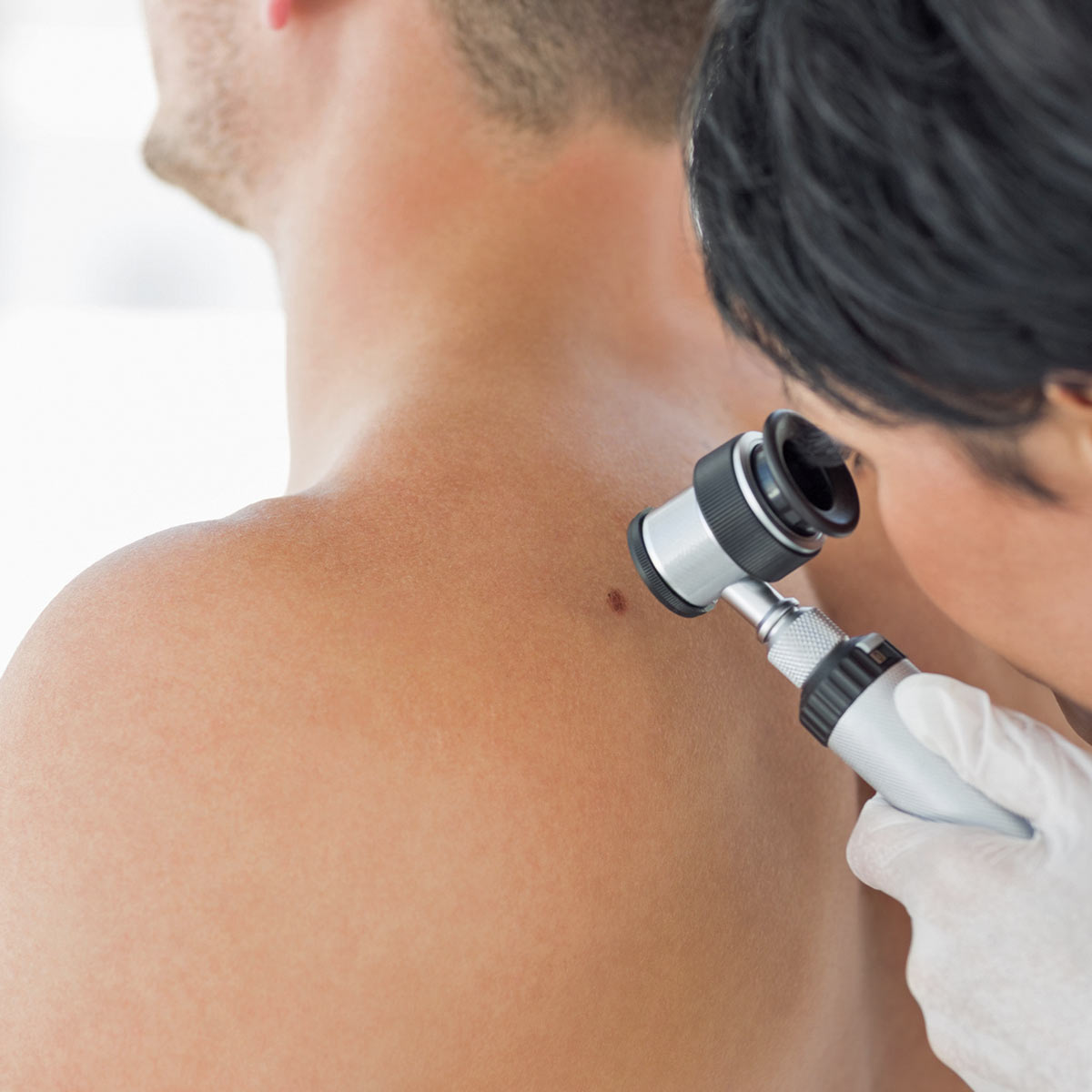
If you have moles on your body, it is important to monitor them for signs of melanoma (skin cancer). It is good practice to have a yearly visit to a dermatologist who can do a complete body mole check, especially for moles on your back or other hard-to-see areas to help you watch for any sign of changes that may indicate that a mole is becoming a cancerous.
About the condition
What are moles?
Generally round or oval in shape, moles are dark spots on the skin—usually brown or black—that are caused when the skin cells responsible for making your skin’s pigment (melanocytes) cluster into a group.
Some moles we’re born with (referred to as congenital nevi), while others appear as we age. Rarely do new moles appear after the age of 25. Typically, the moles we’re born with have a slightly lower chance of becoming cancerous than moles that appear later in life.
When should I see a dermatologist about moles?
Though most moles are not cancerous, moles tend to change as we age, and it becomes crucial to keep an eye on your moles to track any signs of change – including shape, size, and color, as some of these changes may indicate that a mole has become cancerous.
Moles that change in any way should be evaluated by your dermatologist. A dermatologist should also evaluate any moles that become painful, itchy, or look otherwise infected.
Locations treating moles
I saw Dr. Kokkonen for a skin spot. He did a biopsy at the same appointment. It was super-fast, way easier than I expected, and nearly painless. I’ve had mosquito bites that hurt more. I felt very comfortable working with him and will be seeing him annually for my skin checks.
Schedule an appointment
Take the first step today: book an appointment at the clinic that’s convenient for you. We look forward to creating a personalized treatment plan that will get you on the road to clear, radiant skin.
Call 971-374-2150
